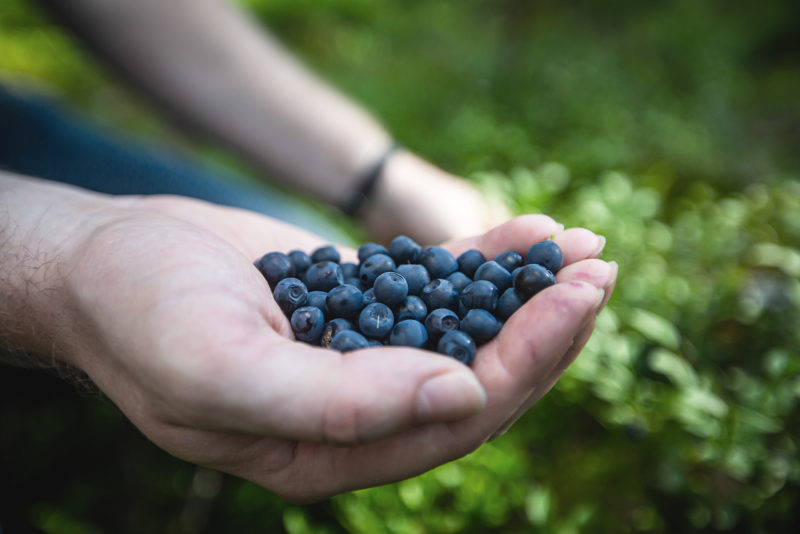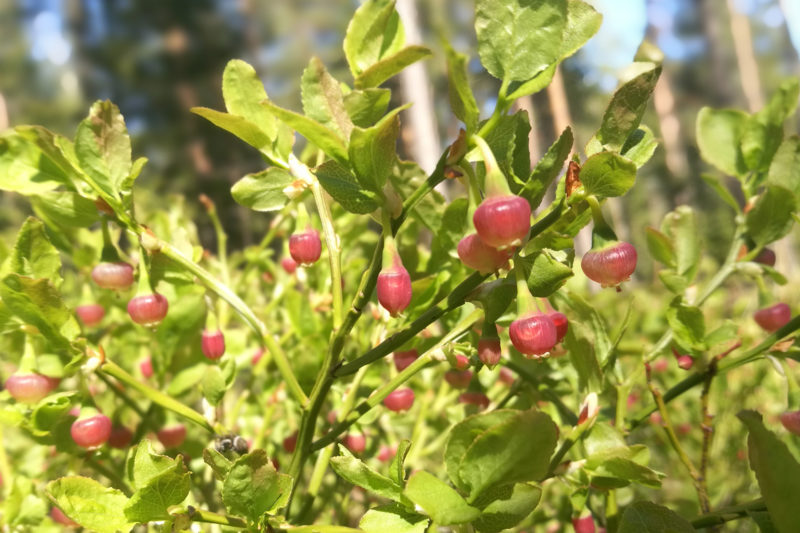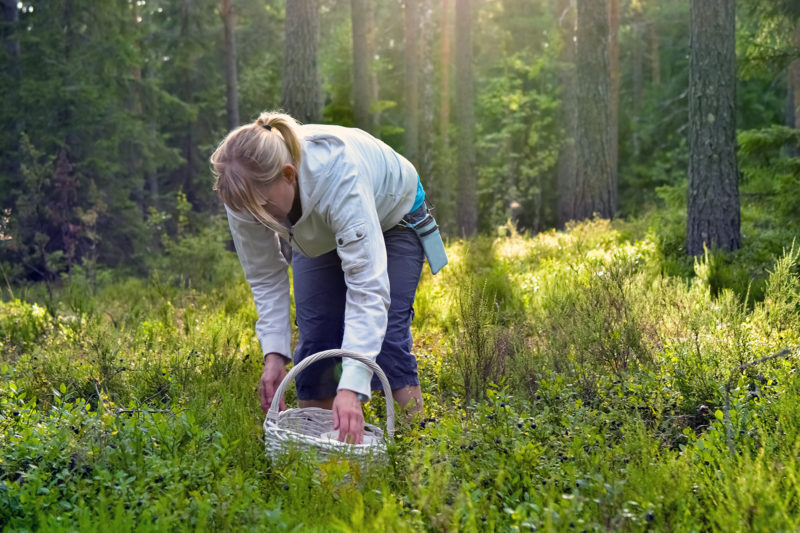Five facts about the bilberry – not only superfood, but also a biodiversity indicator

The most common species found in forests are rarely the stuff of headlines, though they have many important roles in ecosystems. One species of exceptional news value is bilberry or, more precisely, common bilberry or blue whortleberry. We listed five facts that show why this blue pearl of the Nordic forests is valuable to both humans and nature.
1. Biodiversity indicator
’Bilberry is a good key species because many mammals, from bears to voles, as well as grouse species and insects feed on it,’ said Professor Anne Tolvanen, Programme Director at Natural Resources Institute Finland (Luke), to forest.fi when speaking about measuring biodiversity.
Vaccinium myrtillus likes the northern conifer forests and is found in the boreal and subarctic vegetation zones in Europe and Asia, as well as in North America. It is a low-growing woody herb, whose sweet, dark blue berries ripen in Finland towards the end of July.
Flowering in the spring, bilberry is an important source of food for pollinators, particularly for bumblebees. The decrease of pollinator populations is causing concern all over the world. As regards commercial forests in Finland, a special set of instructions has been written to assist pollinators.

2. Motivator of forest management
A few years ago, Finns were shocked to the awareness that bilberries were becoming scarcer. Headlines claimed that the occurrences were up to one half smaller than in the 1950s. The causes of the decrease included clear fellings, soil manipulation and forests that were too dense for this woody herb.
According to Luke, the areas covered by bilberry decreased between the 1950s and 1980s, but the occurrences appear to have grown in size since 1995.
Since then, lighter methods of soil manipulation have been applied and bilberry occurrences have been revitalized, at least in the south of Finland. An inventory of forest and mire vegetation, named Operation Bilberry, examines a total of 3,000 sample plots in all parts of Finland. The results for the whole country will be available by the end of 2023.
’Bilberry will return more rapidly after clear felling and forest regeneration if its network of subterranean stems is not broken by soil manipulation. Up to the 1990s, scalping and harrowing were common methods of soil manipulation. The less invasive mounding is clearly more common today,’ says Professor Raisa Mäkipää in a news article by Luke.
’We need updated information on the changes in forest and mire vegetation when developing forest management methods to make them more sustainable and biodiversity-friendly,’ says Mäkipää.

3. Beneficial to health
Research has found that in many ways, bilberry is beneficial to health. The berries contain plenty of vitamins C and E, as well as fibre.
According to studies, bilberry can improve eye health and alleviate low-level inflammation, for example. The results from several studies also indicate that adding bilberries to the diet can improve memory, among other things.
These health effects are based on the polyphenol compounds that bilberries contain in abundance, as is mentioned in a summary by Luke. The most typical polyphenol group in bilberries are the anthocyanin, which belong to a subgroup of antioxidants called flavonoids. Wild bilberries contain five times as much of these as, for example, cultivated blueberries.
4. Organic and close by
For a Finn, it is quite normal and natural to grab a pail in July and August and go to the forest. Picking bilberries and other forest berries is allowed in all forests on the basis of the freedom to roam, regardless of whether the forest is a privately-owned commercial forest or a national park.
In early summer the media keeps everyone up to date on what the berry crop looks like. This year, it is feared that the cold nights during the flowering have decimated the crop. A more detailed prognosis is issued by Luke around Midsummer Eve.
Finns pick the berries and freeze them to be eaten during winter, but schoolchildren and others can also gain some extra money by selling them. Up to a certain limit, income from berries that one has picked oneself is tax-exempt, and it is said that the best pickers can earn thousands of euros this way.

Even so, most of the berry crop in the Finnish forests is overlooked by humans. Finland is the country with the most forests in Europe, and less than one tenth of the crop of forest berries is picked. Statistics on the commercial picking of bilberry by the Finnish Food Authority for 2022 show that the amount was 9.4 million kilograms.
It is believed that commercial demand could be much higher than this, since in Finland, over 90 percent of berries and mushrooms can be picked in areas classifiable as organic. So far, however, only a small part of such areas have been officially classified as organic.
5. Delicious in many ways
Bilberries are best when eaten fresh and on their own. Nevertheless, they make an excellent ingredient in baking and desserts, as well as for making jam and flavouring yoghurt. The most traditional Finnish bilberry delicacies are bilberry pie and cold bilberry soup.
As regards frozen bilberries either from your own freezer or from the shop, the Martha Association suggests that the best way of recapturing that taste of summer is to thaw the berries by pouring boiling milk on them.
The small, oval leaves of bilberry can also be used in salads or tisanes, and they were traditionally used as remedies for many ailments.